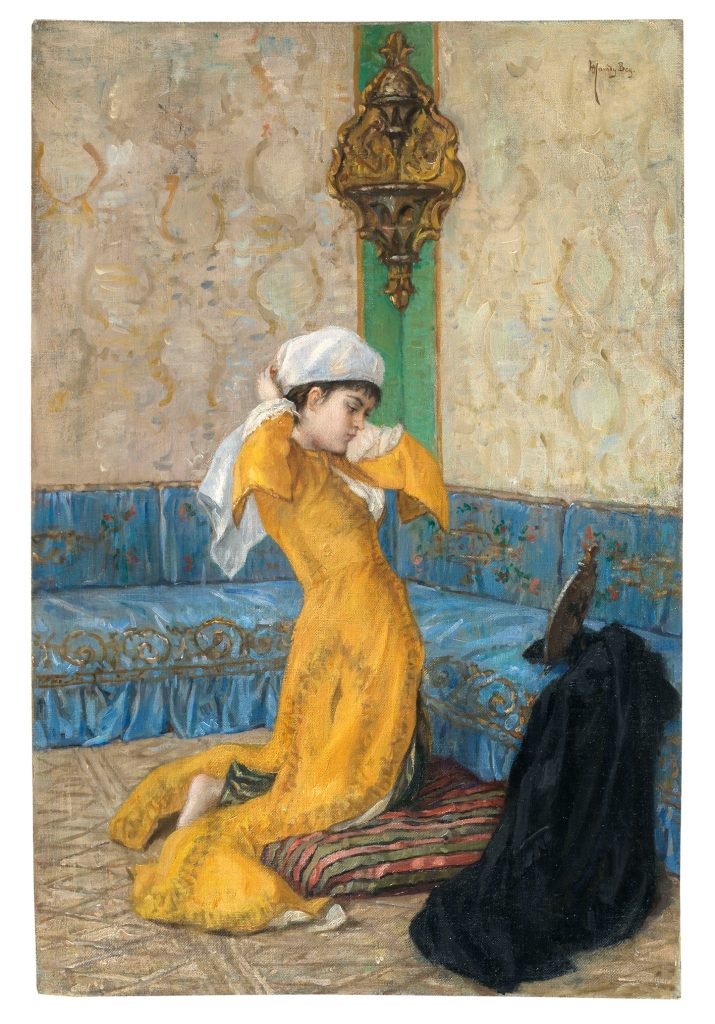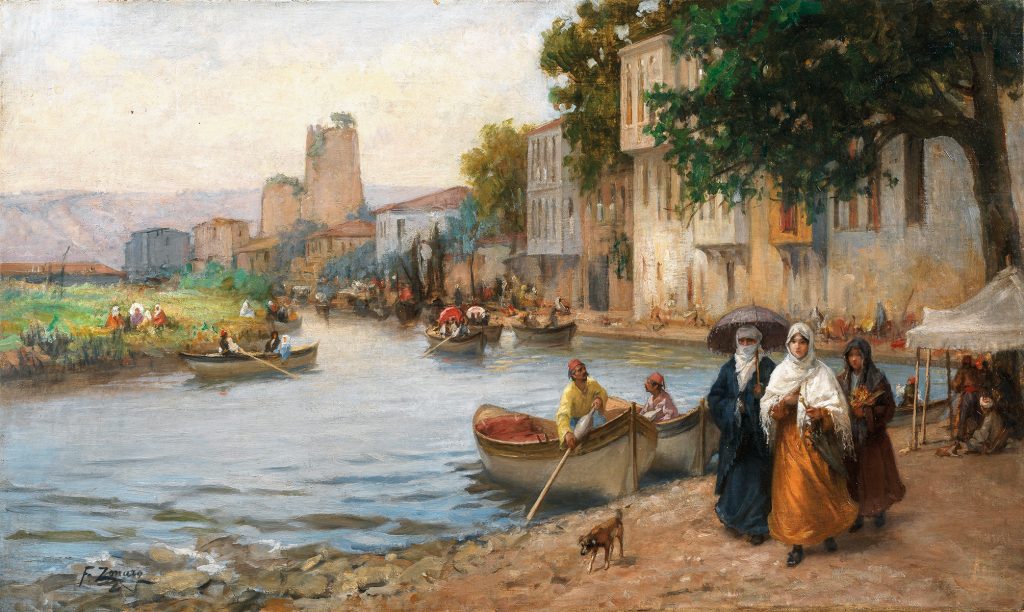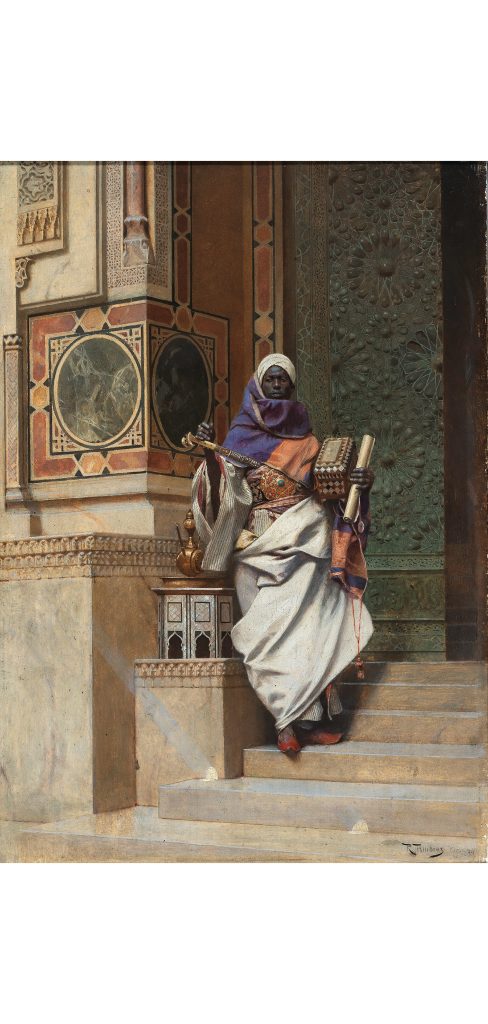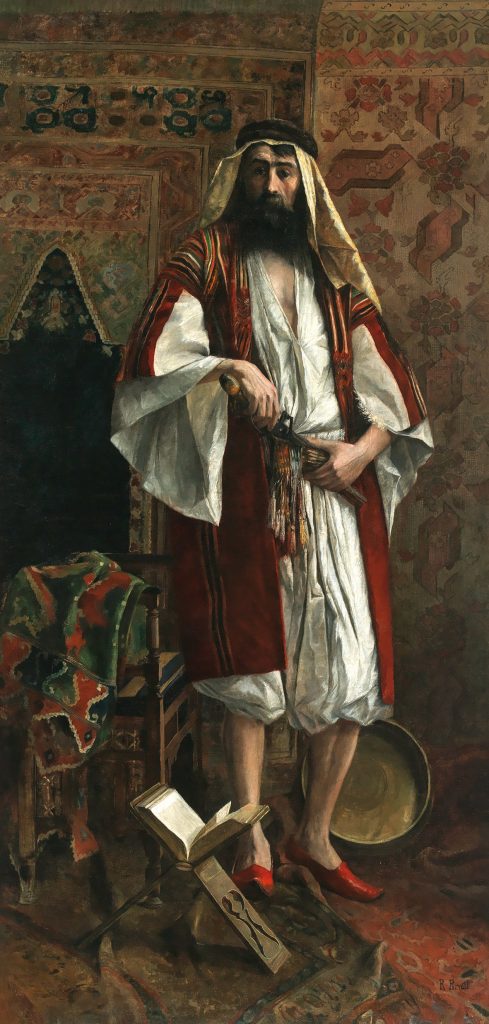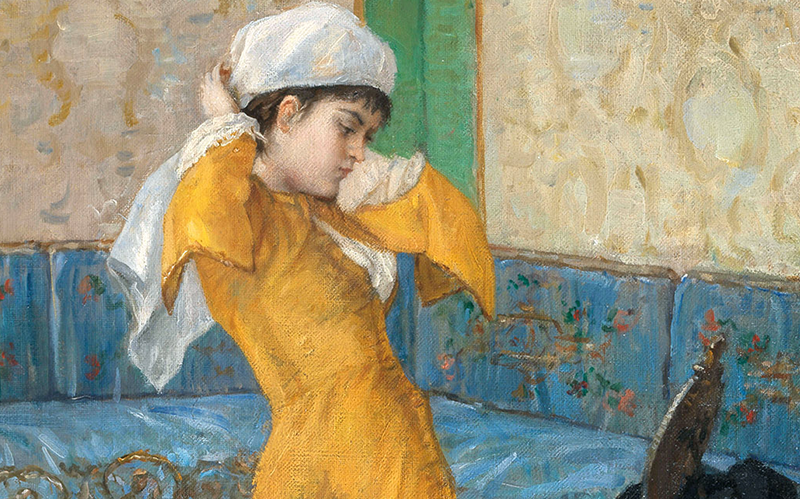
Europeans on the Bosporus and Ottoman scholars in Central Europe: the Grand Tour, the vogue for travelling, and artistic exchange in the 19th century led to a heyday in the depiction of Oriental motifs – as evidenced by the works of Osman Hamdi Bey, Fausto Zonaro and Rudolf Ernst in the upcoming auction of 19th Century Paintings on 2 May 2023.
As the 19th century progressed, more and more artists yearned to travel to foreign lands. One of them was the young Osman Hamdi Bey, who discovered the bohemian lifestyle, and his talent for painting, in Paris. He was the first Turkish painter to align himself wholly to the painting style of the West and complete his art studies with the famous French Orientalists Jean-Léon Gérôme and Gustave Boulanger.
Ottoman lady preparing for an outing which is coming up for sale in Dorotheum’s auction of 19th Century Paintings on 2 May 2023, is a prime example of Osman Hamdi Bey’s approach of fusing traditional Turkish values with Western academic painting. It depicts a young lady in the private atmosphere of an opulent interior. The painter plays with the contrast between the three-dimensional figure and the almost two-dimensional, richly ornamented background and set pieces. The scene does not appear staged, but conveys a carefree modesty, presenting an authentic interior view from real life. It is an intimate view of a young woman in the harem, regarding her reflection in the mirror while dressing. She appears to be from a privileged background and wears a yellow-ochre dress – an example of Hamdi’s interest in capturing the fashions of his time. This aspect recurs in all of Osman Hamdi Bey’s works, as he choreographed his pictures, not as an outsider separated from a foreign culture, but illustrating his own tradition, an insight which put him ahead of most of his contemporaries.
In 1869, after nine years in Paris, Hamdi Bey returned to his home city of Istanbul. He became a pioneer in the preservation of ancient cultural assets and founded an independent painting school. Later, Fausto Zonaro, an Italian who was appointed as court painter to Sultan Abdul Hamid II (ruled 1876–1909), would teach at his Academy of Fine Arts.Hardly any other artist painted more pictures of a city than Zonaro did of Constantinople. On arriving in 1890, he noted that the city’s breathtaking and intoxicating effect outshone anything anyone was capable of imagining. His official post at court did not cut him off from life in the city. He proved to be a prolific painter whose pictures captured every possible facet of Istanbul, including views of fountains, cemeteries and the bustling activity of everyday life in various urban districts, such as seen in the picture Sunday Promenade in Göksu. The resort on the River Göksu on the Asian shore of the Bospo- rus was very popular with the population of Istanbul and offered a splendid opportunity for observing Ottoman life. In the foreground, the ferrymen have just seen to the disembarkation of their passengers on the riverbank and are now underway in their boats again towards the other side of the river. Ladies stroll on the promenade; the heat shimmers palpably in the distance.
The hustle and bustle in Istanbul and the historic sights and monuments in the city inspired not only the artists who lived there, but even more so the tourists, whose extensive trips familiarised them with Turkey and the Arab region. August Étienne François Mayer, a painter born in Brest, opted for the view of the Bosporus in Istanbul at sunset. Bathing it in dramatic light, he shows the Ortaköy Mosque on the left side and a cemetery with Ottoman gravestones in the foreground. The mosque was commissioned by Sultan Abdulmejid I and completed around 1854.
In the second half of the 19th century, it was practically part of an artist’s basic training to tour faraway lands and infuse art with a new and extraordinary repertoire of images. The art capital of Paris became a centre for the Oriental theme. Not only French painters like Auguste Étienne François Mayer studied there, but as we have seen, also international artists such as Osman Hamdi Bey and Fausto Zonaro. Shortly before his time on the Bosporus, in 1888 Zonaro came with high hopes to Paris, where Impressionist painting was at its zenith. Whilst in Paris, he developed his own impressionistic style, which informs most of his Oriental paintings.The Austrian painter Rudolf Ernst was influenced not so much by the potential of Impressionism as by French salon painting – above all by Jean-Léon Gérôme. Ernst was particularly interested in depicting Oriental scenes that reflect everyday life – as it was imagined in the West. He adopted his master’s true-to-life, detailed rendering and use of luminous colours. The painting to be sold at Dorotheum is possibly a portrait of Abd el Kadir (1808–1883), an Algerian military leader, scholar and Arab popular hero. Despite several elements that might suggest an unambiguous identification of the subject – the sword, standing for military achievements, the choice of an immaculate, glowing white for the man’s burnous, or the vague facial resemblance to other contemporary portraits – it is more likely that the subject is a variation of the guard theme.
Raphael von Ambros tackled the same subject. His painting shows a Nubian guard in front of a closed gate. The portrayal is meticulous in execution and shows a masterly command of true-to-life detail. The photographic realism of this tranquil scene testifies to the artist’s academic training at the Prague Academy of Fine Arts, his subsequent studies at the Vienna Academy as pupil of Hans Makart, and his time in Paris, where he was likewise influenced a great deal by the works of Jean-Léon Gérôme. The parallels between the paintings of Rudolf Ernst and Raphael Ambros are striking in the use of colour and choice of theme.
The fascination of the Orient, the yearning for new and faraway lands, and the intellectual exchange between cultures reached its zenith in the 19th century, and the visual arts are an excellent refelction of these trends. The works featuring in the sale of 19th-century paintings on 2 May 2023 offer an opportunity to take an exotic trip through this exciting epoch in art.
Johanna Plank is Specialist for 19th Century Paintings at Dorotheum.
AUCTION
19th Century Paintings, 2 May 2023, 6 pm
Palais Dorotheum, Dorotheergasse 17, 1010 Vienna
19.jahrhundert@dorotheum.at
Tel. +43-1-515 60-355, 377

